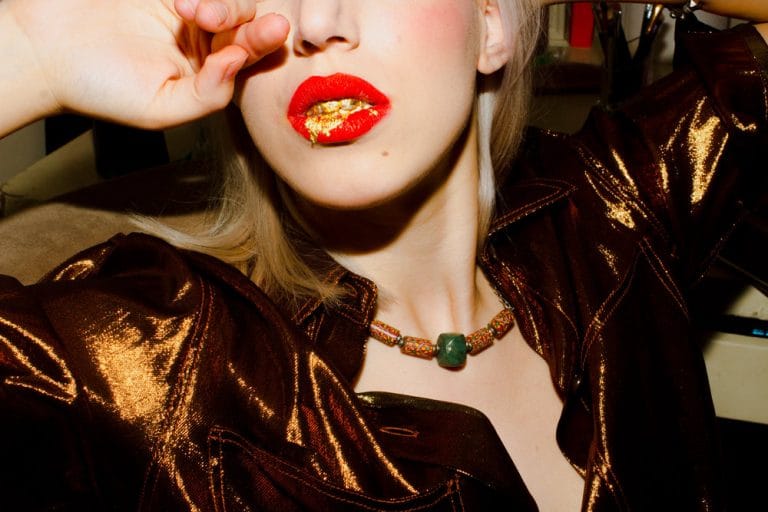Why is the live streaming app NTWRK so successful among hypebeasts?
Remember those hypebeasts that made the decision to only buy knock-offs? Well, NTWRK is probably the antithesis of that mentality. Launched in late 2018 as the first live-stream shopping app made available on iPhones, NTWRK has made a name for itself in the world of sneakerheads. While there had been quite a few attempts at launching something like this previously, none of the other live-streaming apps truly achieved what NTWRK has.
Described by some as a blend of QVC, Twitter and Twitch, the app’s core experience lies in its live shows where guests can discuss products that then become available on the app as the show airs, functioning as a modern auction house. Will the thrill of live-stream buying drive us all towards a whole new way to shop?
NTWRK has a built-in opportunity to offer limited availability streetwear, collectibles and sneakers. With big investors such as Drake, Live Nation and its CEO Aaron Levant, who also started ComplexCon and Agenda, both streetwear and marketing shows—its market is expertly curated through experience and bound to continue doing well.
In an interview with TechCrunch, Levant explained that his transition towards building the app happened through a conversation that he had with the American entrepreneur Jimmy Iovine in 2017. He was introduced by a mutual friend, which led them to see their similar interests and Iovine “expressed his interest in starting a new company for him and his son.” Levant said that “the night that I met him, I went home, stayed up all night to 4 in the morning and wrote the entire business plan for NTWRK.”
Iovine ended up being an investor, along with Digital Networks, Warner Bros, LeBron James, Maverick Carter and Arnold Schwarzenegger. Iovine’s son Jamie is also a co-founder and Head of Fandom at NTWRK.
Levant realised that physical audiences were valuable, but digital media even more so as it is user-generated content that these lifestyle events are based on. Physical events hold capacity limits, whereas digital events do not until, of course, the stock runs out. There is one way to make the world believe that an item of clothing is worth having—produce only a few and add some time pressure to getting it.
We’ve all heard of someone somewhere pulling an all-nighter for Glastonbury tickets, and for the new generation of hypebeasts, this produces a similar desperation to reach the end goal of purchasing what thousands of other people want within seconds of availability. “There’s 50,000 people in the room but I think there’s probably a million people online who want to engage with those products and that content,” said Levant.
NTWRK is far ahead of competitors and has become a launching platform for a brand’s success. Other companies like Net-a-Porter have started holding clothing drops in Animal Crossing, as well as Fred Perry, which invited customers to go on a Google Street View scavenger hunt: “find and click the clothes, and they’re yours.”
It helps to have celebrity endorsements when it comes to gen Z-orientated businesses. In recent months, Drake sold some of his tour merch exclusively on NTWRK. Shopping on the platform almost feels like entertainment too, as NTWRK is a perfectly balanced mix of culture, music, money, rare goods and something to watch, with hosts. The app also allows for ‘winnings’ where the audience can enter draws to receive products, which inevitably builds consumer loyalty and interaction by creating a ‘hype’ surrounding NTWRK and its products.
What Levant believes matters most in creating NTWRK are these three principles: “People want collaborations, they want things that are exclusive, and they want things that are clever in terms of having an insider’s perspective; that sense of exclusivity created by people that really know their stuff. Think about hot pop culture topics with the key people plus a twist: think games selected by and discussed with the best players, hosted by an artist.”
Forbes pointed out that “Driving addiction via the power of spectacle (underscored by the added frisson of time-pressured buying) is a huge part of the NTWRK playbook.” Which brings us to question how long gen Z and the next generations will allow drop culture to last, given the recent, slow, transition fast fashion is taking on.
Drop culture has boomed over the past few years, but will the culture itself soon be dropped too or has it got a long life to live? As for the consumers who value sustainability and slow fashion, well, they aren’t likely to be excited about this model, but it will be interesting to see if the two polar opposite consumer habits ever overlap or collide. In the meantime, NTWRK’s upcoming event #TRANSFER on the 25 and 26 August is intriguing enough to tickle our interest. See you on the app?





